Erick Sharp - Advancing Innovation in Pavement Materials - PODCAST TRANSCRIPT
May 27, 2025 at 4:16 p.m.Editor's note: The following is the transcript of a live interview with Erick Sharp of Cool Roof Rating Council. You can read the interview below or listen to the podcast.
Intro: Welcome to Roofing Road Trips, the podcast that takes you on a thrilling journey across the world of roofing. From fascinating interviews with roofing experts, to on the road adventures, we'll uncover the stories, innovations and challenges that shape the rooftops over our heads. So, fasten your seat belts and join us as we embark on this exciting roofing road trip.
Hello everyone, my name is Megan Ellsworth here at Rooferscoffeeshop.com. I am so excited you are listening to a Roofing Road trip and today we're talking about pavement materials, innovation, the Cool Roof Rating Council and ACE Laboratories and I'm here with Erick Sharp. Hello, how are you?
Erick Sharp: Hello, how are you? It's good to see you, Megan, excited to be here.
Megan Ellsworth: Good to see you too. Yay. I'm so glad to have you and I'm excited to learn about everything you guys are cooking up in the lab. Let's start with just having you introduce yourself and tell us a little bit about ACE Laboratories.
Erick Sharp: Yeah, so I'm Erick Sharp, I'm the CEO and founder of ACE Laboratories, we're located in Ravenna, Ohio, about 20 minutes east of Akron. We're an independent accredited test laboratory, focused on both the roofing application space, rubber-modified asphalt and polymers. And so, we are a 17025 accredited lab and so we do a lot of accredited testing, as well as R&D support for companies in those three sectors.
Megan Ellsworth: Cool. Very cool. Wow, I'm excited to dive into this, this is going to be an interesting topic. So, you tripled your equipment capacity to perform testing for the CRRC, the Cool Roof Rating Council, how was that? What was the significance of that?
Erick Sharp: Yeah, so it was a great opportunity for us when we first got started doing the CRC testing, I think we initially got accredited with CRC in August of '22 and that was shortly after we acquired some initial assets that came out of the old Momentum Technologies operation and brought their team over. That time, we had the single unit, but we wanted to have the capacity and a redundancy to really be able to do large volumes of this type of testing and wanted to position ourselves as a market leader for being able to turn this type of testing around. So, we got six technicians accredited to do all the various methods of CRRC testing and then that time, obviously, the next bottleneck that comes up is equipment capacity.
And so, ironically we had the opportunity with another lab shutting down to acquire some more assets and bring them in and so we were able to bring in a couple more of these units and now have three operating CRC units for the testing, we have two soiling stations now and six qualified technicians to perform the testing.
Megan Ellsworth: Oh, wow.
Erick Sharp: So, it gives us some really good capacity to keep up, as CRC continues to expand in new technologies and new areas and also new people participating in the program. So, I see it as a continually growing opportunity and so I want to make sure that we're always there with the capacity and the availability to support it as more people join in.
Megan Ellsworth: Totally. So, for people out there that don't know, what kind of testing are you doing for the CRRC? What are you testing?
Erick Sharp: Yeah, so there's a few different programs that we support them on, the one being the roofing materials, which was the primary originating program that they had. When it comes to roofing materials, that's the fun part, is there's a large variety of things that go on roofs. Even more so than I realized until we got involved in this type of testing, how many things go on roofs, it's not just a choice between a shingle and a membrane, but there's tile, there's granular embedment with the asphalt, there's green roofs, there's a lot of coatings too that get used, to go over top of it. And so, from a testing standpoint, on the roofing side, it could be any of these different types of components and system, obviously, the prep varies a little bit between that, but it really gives us a lot of flexibility to be able to prepare the different ways.
And then, they have their wall program, which we also participate in, it's one of the few labs that are credited on that. And so, that's normally like your different types of coatings and sealants that go on the outside of the walls that's going to help provide energy efficiency gain, solar reflectance and emittance of the sun rays hitting the walls and not just the rooftop. And now, we're also really excited about CRC's exploration into the paving market and being able to push that and be a part of that as it complements well with our work in rubber-modified asphalt and our understanding around that. So, I think it's a really, really cool concept and it makes a lot of sense when you look at a map of a urban island, there's a lot of asphalt that you're going to see there, so it does have an impact of the heat island effect.
Megan Ellsworth: So, you all are testing the energy efficiency of these products basically?
Erick Sharp: Correct. Yeah.
Megan Ellsworth: Very cool. Very cool. Okay. So, what kinds of tests are now more feasible or efficient?
Erick Sharp: Yeah, so the methods to do them is where we're trying to drive some efficiency, the ultimate testing that we're accomplishing is evaluating the solar reflectance and emittance against the materials for that. But part of the test, especially on the roofing side, is trying to simulate what the product's going to be like on the roof. And so, you can take the fresh product, lay it out, test that, that's one thing, but obviously that product once it's the roof is not always going to be fresh. And so, that's where you can either do, you do the long-term or you send it out to a farm to age for years and then you're going to test it again later, but most people that do that don't want to wait on those results.
So, they'll do a rapid rating and that's where we're putting it in the soiling station and we're trying to simulate how gunky this is going to get after it's been on a roof for that long and then do the solar reflectance. And so, we're able to do rapid ratings to hold a rating for somebody until the long term can come back, so we'll be able to do that to get initial results.
Megan Ellsworth: Oh, that's cool. That's really cool. So, this is really something that companies out there should be interested in, having their products tested and put through this test, as a selling point for home and building owners, contractors that are purchasing these products.
Erick Sharp: Yeah, there's a lot of advantages when it comes to having, one, participating in the program and then, two, being able to actually have a solid rating. Obviously when you look at some of these buildings on the commercial side, there's a lot of pull from the architects that are trying to gain leads credits back from the building design, which is all based upon your energy efficiency and your green credits that you're able to achieve from that. So, architects have a vested interest to spec in products that are going to help them achieve that. So, having your product rated well, designing products that are going to rate well is going to help for being [inaudible 00:07:27] by some of your commercial architects. Obviously never a bad selling point direct to consumers on the residential side too. Sometimes it takes a little more educating the customer when you're dealing direct with consumers, of understanding what an SRI value means in terms of how much is that going to save me on my monthly electric bill is more what they want. So, being able to break it down for them in that aspect is good.
Megan Ellsworth: Yeah. Yeah. This is really cool. And SRI is the solar reflectivity index, right?
Erick Sharp: Yes.
Megan Ellsworth: Yes. I got [inaudible 00:08:03].
Erick Sharp: You've been working with them so long now you you're getting the terms, you're going to be really nerdy before long. Yeah.
Megan Ellsworth: Look at me go. I'm really into this. I love it. Okay. So, with your simulated weathering, the... What did you call it? The?
Erick Sharp: Soiling.
Megan Ellsworth: Yes. Okay. With that expansion in January, how has the ability to simulate environmental conditions improved? What have you guys improved upon?
Erick Sharp: Oh, yeah. So, even beyond just the soiling station, we've done a vast amount of expansion on our general simulated weathering equipment, including our xenon chambers. We've tripled our size on xenon capacity, since January, we've doubled our size on QUV capacity since that time as well. And those instruments are key, obviously part of that aging for the CRC testing, when you do the soiling, you also need to give it that for synthetic sunlight to show the harsh sunlight effect that it had on it over that period of time. But that's also a test that's used in a lot of application for roofing and even on our polymer side of our business, that we have to do a lot of weather simulating. So, at the end of the day, whether it's a roof product or a rubber gasket that goes on the outside of a window, these things have warranty life cycles that they need to make sure that they're going to hold up to. So, we're trying to simulate a 15, 20 year life cycle of a product and get it done in three months.
Megan Ellsworth: Wow.
Erick Sharp: And show that it's going to hold that. So, within these chambers, there's different luminous of light that's simulating the sun effect on it, that hits it, it will rain, it will create humidity inside these chambers-
Megan Ellsworth: Wow.
Erick Sharp: ... and so it will do a rain cycle and then it will do a dark cycle, then the sun comes out and so it's trying to quickly simulate across these days in the environment. So, it's kind of cool, that's the stuff I geek out on, is when somebody tells me like, hey, I got a product and it's going to go into this application and here's the different things that it's going to see, being like, okay, how can I simulate that effect and do it in such a quick period of time that they can validate it? Those are always fun experiments to do.
Megan Ellsworth: That's cool. That's cool that you guys are in the lab simulating all of this real world damage to these products, I think it's cool to be able to see... I bet it's cool to be able to see the products hold up and do what they're supposed to be doing and give that good news to the company, basically.
Erick Sharp: Yeah, yeah, absolutely. It's always nice seeing them pass, seeing everybody excited, it's fun too to see new technologies come in the door, of hey, we're trying a new type of polymer, we want to see how it holds up and just see how it performs and stuff. So, one of the fun parts being in an independent test lab is that you see a little bit of everything that comes in the door. And you normally get on the front end of innovation as people have things they're wanting to vet out and try, you get to see those and geek out internally about what's going on and then you anxiously await for it to commercialize so you can see how it performs in industry.
Megan Ellsworth: Love it. Love it. Okay. So, you acquired the former Gorman Technical Lab, you mentioned this earlier laboratories and brought in a lot of new resources. How do you see that strengthening CRRC's material testing initiatives, particularly in the roofing and pavement sectors?
Erick Sharp: Yeah, so that acquisition is what helped us increase our capacity on our testing, as well as our weathering pieces that are there, which is giving us a lot of flexibility in how we can grow that. And the fun thing about what we do is we're not just a testing lab, but we're also an R&D support lab. So, we can always work with companies too that maybe they get an SRI value off of that and they want to be able to improve that. And so, we have an R&D side of our business of working with them on, Hey, how can you improve your SRI value on a material like that? And guiding them there. So, having the test capability increase with our existing R&D experience that came, it's the perfect combination for us to really take things to the next level in how we can support our CRC customers.
Megan Ellsworth: That's really cool. I love that you all have an R&D side too and are able to do that innovation alongside your customers and not just be on the receiving end, you're in the mix too.
Erick Sharp: Yeah. Yeah. We're too nerdy just to test, we end up getting involved.
Megan Ellsworth: Yeah. Yeah, I love it. I love it. Okay. So, CRRC's Pavement Ratings Steering Committee is currently exploring a potential pavement products rating program, can you tell us a little bit about that and what that's going to look like?
Erick Sharp: Yeah, so we're excited, we have Rodney Armstrong, who's our engineering manager on that committee, that's kind of helping guide some of the pieces of what can be done with that.
Megan Ellsworth: Cool.
Erick Sharp: I think it's a great idea, like I mentioned earlier, how much pavement is in the landscape of an urban island, it makes sense. But I also think that there's a lot of untapped innovation when it comes to pavement and asphalt technology, that this could really lead to that innovation. So, obviously starting up with the program, there's factors on what the test methodology is going to be. How do you get the samples? How do you age the samples? What condition do they need to be in, what needs to be... All those types of things. And that's what a lot of the work that the committee is doing and they've got the brilliant minds on that committee to kind of come up with those.
The part that's kind of exciting me on the background is, okay, I know when we start measuring this, then that's going to start the rat race to how do we improve it? And then, that's going to initiate the innovation as to how can we make better asphalt, paving roads that are going to perform better.
Megan Ellsworth: Absolutely.
Erick Sharp: So, I think it'll be this chain reaction that takes place and it's going to be initiated by just first coming up with how do we measure it and how do we find out what home base is and then from there, the innovation kicks in to see how we can do better. But I think there's a lot of low-hanging fruit on the innovation side of how we improve solar reflectance on paving roads, but it really hasn't been brought to the surface yet, as far as how we can attack that and how you measure against that. So, I think once this is in place, that's really going to open up a lot of innovation for paving technology.
Megan Ellsworth: Yeah. I think that's really exciting too because like you mentioned, the urban heat island effect, I live in Denver and the summer can be brutal, because just absolutely surrounded by asphalt and pavement and roads and black concrete surfaces. So, I'm glad that you all are looking into this and how can we fix that and change it in a easy way that's not going to totally, we have to pull up all the roads all of a sudden.
Erick Sharp: Yeah, yeah, yeah.
Megan Ellsworth: That's exciting that someone's working on it.
Erick Sharp: I know a lot of the exploration projects that have been done right now is around using emulsion, that you can use on the... So, it's almost like, in a way, a coating over the top of an asphalt.
Megan Ellsworth: Wow.
Erick Sharp: So, you can still have your asphalt road, you wouldn't have to completely repave or anything, you're just going across and you're putting an emulsion layer onto the paving and that emulsion layer can have tinting pigments in it to adjust color. So, a lot of the studies I saw, they were able to put an emulsion layer over to get it a light gray type tint on the roadways and stuff. So, it's kind of cool to see how those technologies work. I'm sure there's always a ongoing transition as things happen, so maybe we figure out how to change tint on a road to improve solar reflectance, there might be some downstream effects of that, that have to be figured out as we go as far as the line markings have still got to work, these autonomous vehicle tracking still has to work and stuff. So, it's a complex long-term solution, but it's got to start somewhere and I think this finally ticks that off.
Megan Ellsworth: Yeah, that's really cool. That's really exciting that you all are just on the cutting edge. And leave it to CRRC to be on the cutting edge, they're just so innovative and they really care about what they're doing and the reason they're here.
Erick Sharp: Yeah, what their mission is. Yeah.
Megan Ellsworth: Their mission, yeah. They care so much, it's really cool. Okay. So, what are some of the key challenges that both the council and testing labs, like ACE, are working to overcome in order to maintain accuracy and relevance in material evaluations?
Erick Sharp: Yeah, I think as new materials are coming about and new innovations come about, that always creates curveballs sometimes for methodology. Methods are developed around materials that was there at that time and as new materials come on the scene, sometimes methods have to be evaluated, adjusted, modified, added to whatever it might be to accommodate a material technology advancing. And so, I think that's going to be the key thing as material technology continues to advance, that the technical team is staying on top of how that affects methodology and if there needs to be any adjustments to account for that. Because ideally, the whole premise of doing this is to drive that innovative change, so we just got to make sure our methods keep up with that.
Megan Ellsworth: Yeah, yeah, absolutely, that's really important. The CRRC expanded its focus to include these radiative properties of pavement materials, can you share a little bit of what that expansion means in how it impacts your testing capabilities? What did this do to ACE Laboratories when they brought this in?
Erick Sharp: Yeah. So, it's obviously not commercial yet, but [inaudible 00:18:36] exploratory stage. But the thing that we're excited about is we already play in a lot of this asphalt technology, from the standpoint that we can do trial batches of asphalt here, as well as doing all the other testing that comes with it. So, we have a lot of infrastructure in place here right now for asphalt, which I feel puts us in a good spot because we have that infrastructure and we have the CRRC infrastructure and we can easily put the two together. So, when it comes to the point when we need to develop the methodology for this and prove that concept of how we test these, we can easily create batches, we can prep samples, we already have that infrastructure in place here, so I think we can be a really strong supportive partner to the CRC as they develop this program.
Megan Ellsworth: Yeah. And like you said before, they found it could be potentially a coating that goes on top of the pavement and you guys already work with that, with the CRRC and different roof coatings and whatnot, so that's cool.
Erick Sharp: Yeah. Yeah, similar concepts as a coating on a membrane roof, as the emulsion on a paving road. So, I think that same type of thought process works across the board.
Megan Ellsworth: For sure. So, what would you say is most important to this collaboration between CRRC and labs like ACE, that are diverse and have a range of testing capabilities? What do you think is so important about that collaboration?
Erick Sharp: Yeah, I think there's a couple areas on the collaborative side of it, obviously you have your day-to-day aspects of having core accredited labs that have been audited and verified to the standard of CRC and that consistency is key. While we are expanding our capacity and our technician and stuff like that, well aware that we can't do 100% of everything in CRC, so it's key that there are other labs that are able to, for that capacity and for that redundancy of it. And as CRC continues to expand globally, that's going to become key, of having lab access that's there. And so, having the program and the collaboration with labs to ensure that everybody, no matter if it's us here in Ravenna, Ohio or potentially a new lab sitting in India, that we're doing it the same way.
And that's the same as how our accreditation works, ISO 17025 accreditation works, where they come and they audit. And they want to make sure anybody testing is doing it the same way for that consistency of that. So, CRC has good program in place for doing that accreditation, working with labs to make sure everybody is aware of any updates or changes and things and keeping that consistency across the board of all of their labs. I think that's always key. And that's on the day-to-day test side, but I think as was mentioned earlier, when it comes to method development, collaboration with some key labs is always important too. And that's where we're able to support a lot on the paving program and our capacity allows us to support even on any potential method evaluations that need to be done by the technical committee.
And having that collaboration with labs, when they're looking at any technical changes or new areas to get into is key for getting all the variables evaluated to make sure that we're making a wise decision. And that collaboration's been great, it's always been fantastic working with the group there. We have, in addition to Rodney on the paving committee, we have Andy Jamber on the technical committee and Ashley Timbs on the wall rating committee, so we try to keep our team involved in all the committees so we can know how to best support the efforts of CRC.
Megan Ellsworth: Yeah. That's cool that you are involved on an organizational level too, in the committees and vice versa, it seems CRRC is very involved with ACE Laboratories and it's a working friendship. I love it. So, as CRRC continues to grow and evolve, what are some exciting developments you're seeing on the horizon for added material testing that you and CRRC want to work on?
Erick Sharp: So, on the CRC side, obviously they're big advancements on paving right now, but I like the fact that they started with roofs, they did wall, now they're doing paving and that there's this continuous, what's next?-
Megan Ellsworth: Wow.
Erick Sharp: ... where else could we use this type of technology to help with? And so, I think that's going to continue to advance. I know there's a lot of initiatives on their end too for the broadening beyond the US and to other markets and using this globally, which I think that there is an opportunity for that, for sure. ACE, as a whole, we deal with a lot of different testing within the roofing sector, even outside of CRC, just like the Miami-Dade type testing certification, stuff like that.
And we do a lot of polymer work and through those endeavors, we do a lot of international business with companies. So, last year we did a business within 21 different countries of support. And so, I think we can also help with CRC as they look to advance into some of these other markets and geographical locations if we have connections or contacts there to be able to support those for that broadening. Because I think, as you look at a lot of these other industry programs like this, they do seem to eventually go more international and have a broader approach, so I think this can be one of those for sure.
Megan Ellsworth: Yeah. I do too. Because it is a global, I don't want to say issue, but a global issue.
Erick Sharp: Yeah.
Megan Ellsworth: The urban heat island effect affects cities globally and everyone wants to have a more efficient building or home, not only for their own wallet, but for the health of the planet. So, I think, like you said, that's really cool to look at this globally.
Erick Sharp: Yeah, from a macro level, outside of the consumer advantage from energy costs, it is global warming, it's not US warming, it's the global warming. So, it is a global issue, for sure.
Megan Ellsworth: Right, absolutely. Well, Erick, this has been very informative and I've had a blast. I love talking about this stuff and I just love the work that CRRC and ACE Laboratories are doing to bring this green mission into roofing and building materials and the trades, I think it's so important. So, thank you for chatting with me today.
Erick Sharp: Thank you for the opportunity to talk to you.
Megan Ellsworth: Absolutely. Okay, so everyone can go to the Cool Roofs Rating Council, CRRC, directory on Rooferscoffeeshop.com to learn more, find information on how to get in touch with ACE Laboratories and just see all their initiatives. They have a lot of stuff going on right now, they came out with elementary school course, I believe or middle school.
Outro: Yeah and they're based in Portland or egon and they're just the best. So, definitely go check out CRRC and everything that they're working on through their directory on Rooferscoffeeshop.com. And please make sure you are subscribed and ring the bell so that every time we upload a new episode, you get notified. This has been an amazing Roofing Road Trip and we'll see you on the next one. Thanks, Erick.
If you've enjoyed the ride, don't forget to hit that subscribe button and join us on every roofing adventure. Make sure to visit Rooferscoffeeshop.com to learn more. Thanks for tuning in and we'll catch you on the next Roofing Road Trip.
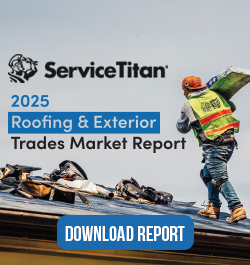



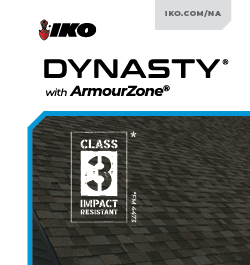
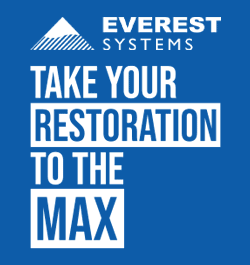




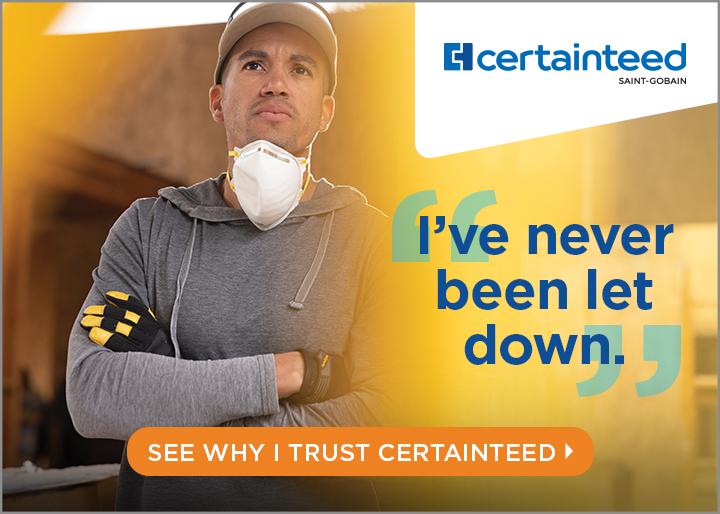
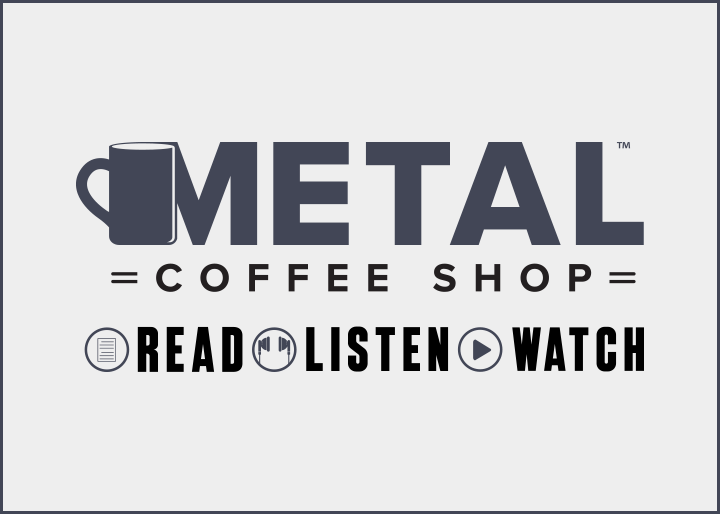
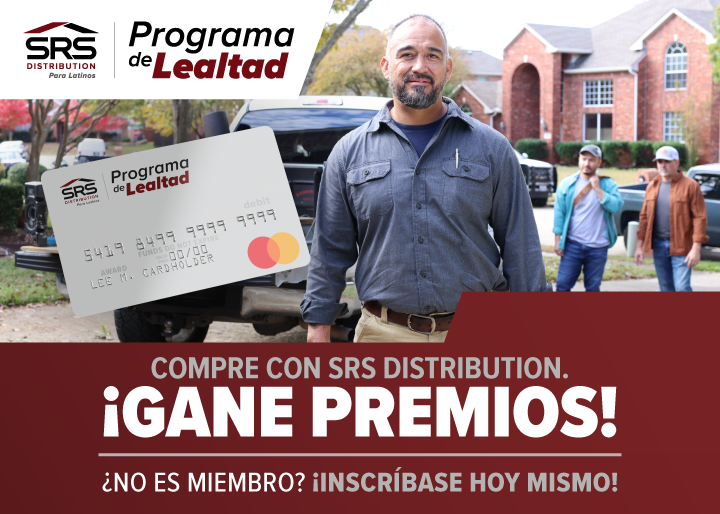
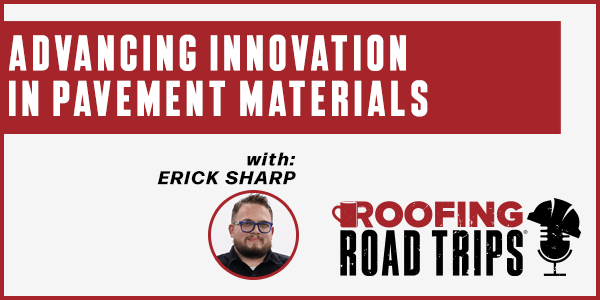
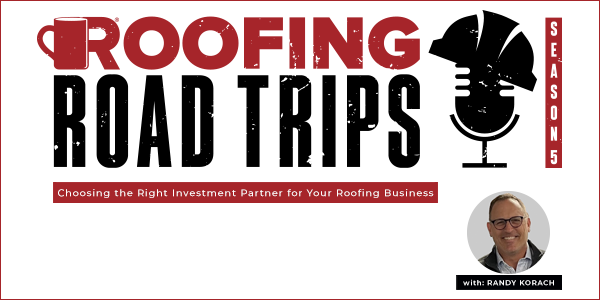
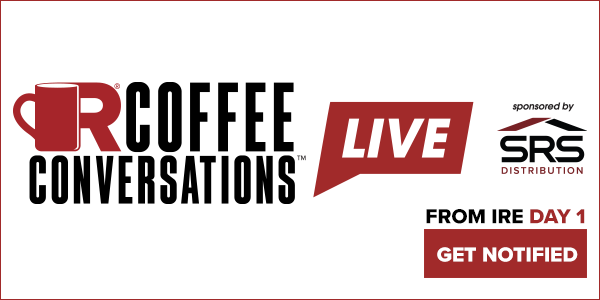
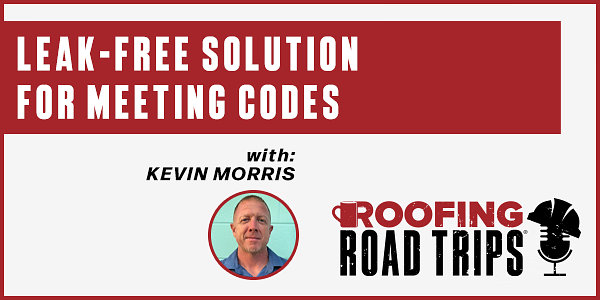





Comments
Leave a Reply
Have an account? Login to leave a comment!
Sign In